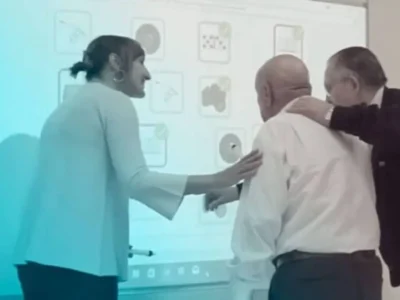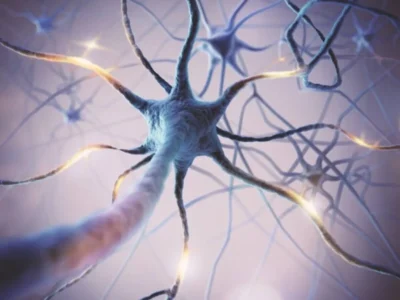Introduction
Early detection of Alzheimer’s disease helps reduce disease progression, minimize the impact of symptoms, and improve the quality of life of the older adult. It is necessary to provide accurate information about the characteristics of the disease and interventions to support the older adult from home.
The diagnosis of some type of dementia, such as Alzheimer’s disease, implies lifestyle changes not only for the person who has it but also for their closest family members and friends (Molina, 2016). Currently there are numerous resources available to intervene in this situation so that no one has to face this disease alone.
Of course, it is difficult to pinpoint when the disease begins to manifest because symptoms appear gradually. However, early diagnosis is important, as symptoms are often mistaken for the process of normal aging (Donoso, Venegas, Villarroel & Vásquez, 2001). At this time, information that loved ones can provide to treating professionals is essential, since they may notice symptoms before the person experiencing them does.
What is Alzheimer’s disease?
Alzheimer’s disease involves the progressive loss of the cognitive functions that enable interaction with the internal and external environment. It also affects other areas such as perception of reality, emotions, behavior, motivation, and sleep (Acosta-Castillo, Sosa, Orozco & Borges, 2012).
Indicators for the early detection of Alzheimer’s
In this regard, among the indicators that allow recognizing the first changes associated with Alzheimer’s disease after its detection, it is possible to mention:
Memory loss
The person forgets important dates or events, has difficulty recalling recently learned information, and resorts to external aids, such as sticky notes or asking family members questions to retrieve that information.
Frequent forgetfulness
The person loses objects or puts them in incorrect places, and later has difficulty remembering where they are.
Alterations in abstract thinking
The person has difficulty remembering the meaning of money or the procedures to carry out a task, as well as evaluating similarities or differences between objects.
Difficulties performing daily tasks at home or work
The person may take longer to perform tasks they previously did easily or have problems finishing them.
Disorientation regarding time and place
Forgetting important dates, difficulty identifying the current date or season, confusion about the place they are in or how they arrived there.
Language impairments
The person has trouble finding the right words or using vocabulary when writing or starting and maintaining a conversation.
Emotional and behavioral changes
The person may show sudden mood changes, irritability, anxiety, depression, or aggressiveness.
Other indicators
- Impaired judgment or difficulty making decisions,
- problems paying bills or solving simple arithmetic,
- difficulties paying attention, concentrating, planning, and solving problems,
- difficulties understanding visual images and the relationship between objects,
- inability to draw or copy simple figures,
- loss of initiative or motivation to perform activities they previously enjoyed or carried out without difficulty,
- decreased participation in recreational, social, and work activities.
How to cope with the early detection of Alzheimer’s?
In most cases, family members, especially children or spouses, take on the role of primary caregivers for their loved ones with Alzheimer’s, reaching high levels of stress and burden (Pérez Perdomo, 2008). For this reason, it is important to provide a series of suggestions to properly face the initial stages after Alzheimer’s detection.
Recommendations for properly facing the initial stages after detection of Alzheimer’s disease
- Schedule a medical consultation to obtain an accurate and early diagnosis.
- Obtain information about the disease and the most effective treatments.
- Be patient when assimilating changes in the older adult with Alzheimer’s and in the daily routine.
- Participate in family associations for people with Alzheimer’s to obtain advice and support when facing the new situation.
- Inform the older adult about the diagnosis using simple and understandable language. Also, include them in decision-making regarding the treatment plan to follow. Take into account their opinions, feelings, and rights to preserve their dignity.
- Hold a meeting with all family members to establish agreements and plan the new organization at home to help the loved one with Alzheimer’s.
- Establish a routine and maintain stability at home. This provides security to the person with Alzheimer’s, helps preserve remaining abilities, and promotes autonomy. Also, define the schedules, places, and people who will assist with the various activities of daily living.
- Simplify tasks and explain the steps to follow to complete different activities.
- Avoid arguments among family members. That is, maintain a stable and calm environment at home so the person with Alzheimer’s does not become upset.
- Implement home safety measures, taking into account that lack of physical coordination and disorientation can increase the likelihood of falls and injuries.
Cognitive stimulation for patients with Alzheimer’s disease using technology

In recent years, Information and Communication Technologies (ICTs) have taken on a relevant role in different areas of society.
Therapeutic interventions using these tools have positive effects on both cognitive functions and emotional and behavioral symptoms in patients with Alzheimer’s disease, achieving better results than other more traditional interventions (Fernández-Calvo, Rodríguez-Pérez, Contador, Rubio-Santorum & Ramos, 2011).
Advantages of ICTs in therapeutic interventions
ICTs make it possible for people with this disease to maintain ties to society through news that is available with a click. They also promote communication with loved ones through video calls or chats. Likewise, they favor the maintenance of preserved cognitive functions and reduce cognitive decline through stimulation and cognitive rehabilitation exercises in a context of training and recreation, increasing motivation and feelings of self-efficacy (Luque, 2007). In addition, they allow better organization of routines and activities of daily living, and help exercise other functions such as gross and fine motor skills, orientation, and coordination.
How to address Alzheimer’s disease through technological tools?
When introducing new technologies as a tool for cognitive stimulation in people with Alzheimer’s disease, it is necessary to adopt a person-centered approach, taking into account their abilities, limitations, and preferences (Luque, 2007). It is also important to include the patient in the choice of intervention exercises, promoting communication and decision-making.
ICT tools can complement the work of cognitive stimulation performed by professionals in health centers, reinforcing the skills and functions trained during sessions, thus allowing the patient to continue treatment in a safe environment, taking into account the current epidemiological situation.
NeuronUP as a cognitive stimulation tool in the diagnosis of Alzheimer’s
NeuronUP is an important resource for health professionals who carry out cognitive stimulation and rehabilitation treatments by providing various materials to plan, implement personalized intervention plans, and monitor patients with Alzheimer’s from the safety of home.
In this regard, it allows professionals to save time, money, and material resources, being an ecological and easy-to-use tool for older adults. This tool allows exercising different cognitive functions such as memory, language, attention, concentration, orientation, and visuospatial skills through the simulation of activities of daily living.
Personally, this tool has allowed me to obtain effective results with my patients, since it can be used at any time and place, and its format can be adapted to paper, computer, or touch technological devices.
Conclusion
The increase in life expectancy has caused a rise in the prevalence of people suffering from neurodegenerative disorders in recent years, especially Alzheimer’s disease (Delgado & Salinas, 2009).
For this reason, it is necessary to provide resources to family members and caregivers, who spend most of their time with older adults, so they can identify symptoms early. In this way, the likelihood of reaching an accurate diagnosis and subsequent intervention to improve the loved one’s quality of life is increased.
In the current context of the pandemic caused by the Covid-19 virus, technological advances are an important support so that older adults with Alzheimer’s can continue their treatment plans remotely, promoting cognitive stimulation in home settings.
References
- Acosta-Castillo, G. I., Sosa, A. L., Orozco, R., & Borges, G. (2012). Neuropsychiatric symptoms in older adults with dementia and their relationship with disease severity. Revista de Investigación Clínica, 64(4), 354-363.
- Delgado, C., & Salinas, P. (2009). Assessment of cognitive alterations in older adults. Revista Hospital clínico de la Universidad de Chile, 20, 244-251.
- Donoso, A., Venegas, P., Villarroel, C., & Vásquez, C. (2001). Mild cognitive impairment and early Alzheimer’s disease in older adults. Revista chilena de neuro-psiquiatría, 39(3), 231-238.
- Fernández-Calvo, B., Rodríguez-Pérez, R., Contador, I., Rubio-Santorum, A., & Ramos, F. (2011). Efficacy of cognitive training based on new technologies in patients with Alzheimer’s-type dementia. Psicothema, 44-50.
- Fong Estrada, J. A., Collejo, Y., Poll Reyes, M., Lam San Juan, M., & Guzmán Núñez, S. (2013). Psychological assessment in older adults with risk factors for Alzheimer’s disease. Medisan, 17(12), 9118-9123.
- Luque, L. E. (2007). Cognitive stimulation through computer resources. Revista de la Asociación colombiana de Gerontología y Geriatría, 21(4), 1093-1098.
- Molina, M. (2016). The role of neuropsychological assessment in the diagnosis and follow-up of dementias. Revista Médica Clínica Las Condes, 27(3), 319-331.
- Pérez Perdomo, M. (2008). Interventions directed at caregivers of older adults with Alzheimer’s disease. Revista Habanera de Ciencias Médicas, 7(3), 1-11.
If you liked this post about the detection of Alzheimer’s in older adults, we recommend you take a look at these posts:
“This article has been translated. Link to the original article in Spanish:”
Detección del Alzheimer en adultos mayores







 Stroke or CVA: what it is, types, and possible sequelae
Stroke or CVA: what it is, types, and possible sequelae
Leave a Reply